Contrary to what Tex-Mex restaurants (or Mexican-inspired restaurants) will lead people to believe, Mexican food is never drowning in cheese. Sure, Mexican cuisine uses cheese but not to the extent that those aforementioned restaurants do. Cheese in Mexican cuisine is most often used as a light topping, light being the key word. When it is used as a filling, then of course the amount required is more.
Sure, we have a few dishes that are all about the queso, like quesadillas, chiles rellenos, seared cheese and queso fundido. But other than that, in a real authentic Mexican restaurant or home, you will never be served dishes with so much cheese you can barely tell what’s underneath. Oh, and yellow cheese does not exist/belong in real authentic Mexican food. Ay! But that and other non-existing/belonging foods is a story for another day. Perhaps one can use the amount of cheese on a plate as a measuring point to the authenticity of the food in a restaurant?
The Spanish conquistadors are who originally brought cheese making, and milk-based products for that matter, to Latin America. Later, as Swiss and German settlers arrived in different parts of Mexico, they introduced their own dairy processes and cheeses. Modern day Mexican cheeses range from soft fresh cheeses to firm aged cheeses. The variety is small compared to, let’s say, French cheeses, but they do their job perfectly in Mexican cuisine.
Queso fresco – literally “fresh cheese” – is the cheese most commonly used in Mexican cooking. It is a crumbly cheese used throughout the country — not melted into dishes, but sprinkled, filled, or sliced. This homemade version requires only whole milk, lemon juice, and buttermilk — no special tools, no rennet.
Get the milk out and start that queso for tonight’s Mexican dinner!
How to Make Queso Fresco: Step by Step Guide
Step 1: Heat the Milk
Pour milk into a large pot. Heat over medium heat until tiny bubbles form around the edges, just before boiling.
The milk should feel warm to the touch but not hot enough to burn your finger.
Reduce heat to low immediately.
Step 2: Forming the Curds
Slowly stir in the buttermilk. Next, add fresh lemon juice.
Continue gently stirring until curds begin to form (small solid lumps).
If curds don’t form after 2 minutes, add an additional teaspoon of lemon juice gradually until curds appear.
Turn off heat, cover, and let the curds rest undisturbed for about 10 minutes.
Step 3: Draining the Cheese
Line a colander with muslin or clean cheesecloth, placing it over a bowl or large container to catch the whey.
Carefully pour the curdled mixture into the lined colander. Caution: Hot liquid!
Gather the cloth edges, lift, twist gently, and secure it over a deep bowl using a wooden spoon to suspend the bundle. Allow the whey to drain away from the cheese curds.
Leave to drain for 50 minutes, periodically tightening the cloth to remove excess moisture.
Step 4: Season and Shape Cheese
After draining, unwrap cheese curds into a bowl. Add salt to taste, mixing thoroughly by hand.
Press the cheese into your desired shape using your hands or a small bowl or mold.
Cover and refrigerate for at least 1 hour until chilled and firmed up.
Step 5: Serve
Serve crumbled or sliced on tacos, salads, quesadillas, or your favorite dishes.
Queso Fresco FAQ:
Can I use skim milk?
Whole milk works best; skim milk results in less creamy, drier cheese.
What if my curds don’t form?
Slowly add more lemon juice until curds form; slight acidity helps curdle the milk.
How long can I store Queso Fresco?
Store refrigerated in an airtight container for up to 3–4 days.
Can I freeze homemade Queso Fresco?
Freezing alters texture; fresh is recommended, but freezing is possible up to one month.
Can I substitute vinegar for lemon juice?
Yes, white vinegar can substitute lemon juice in equal amounts.
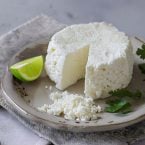
How to Make Queso Fresco at Home (Traditional Mexican Fresh Cheese)
- Total Time: 1 hour 10 minutes
- Yield: Makes one 225g cheese 1x
Description
Homemade Queso Fresco is a fresh, mild, Mexican cheese that is made by gently heating whole milk, curdling it with buttermilk and lemon juice, and then draining the curds to form a lovely soft cheese. It’s perfect crumbled over tacos, salads, or even enjoyed on its own.
Ingredients
34 ounces (1 liter) whole milk (3.5% fat recommended; UHT works fine)
1 cup (240 ml) buttermilk
2 teaspoons freshly squeezed lemon juice (more if needed)
Salt, to taste
Equipment:
Large pot
Colander
Clean muslin or cheesecloth
Large container for draining whey
Instructions
Step 1: Heat the Milk
-
Pour milk into a large pot. Heat over medium heat until tiny bubbles form around the edges, just before boiling.
-
The milk should feel warm to the touch but not hot enough to burn your finger.
-
Reduce heat to low immediately.
Step 2: Forming the Curds
-
Slowly stir in the buttermilk. Next, add fresh lemon juice.
-
Continue gently stirring until curds begin to form (small solid lumps).
-
If curds don’t form after 2 minutes, add an additional teaspoon of lemon juice gradually until curds appear.
-
Turn off heat, cover, and let the curds rest undisturbed for about 10 minutes.
Step 3: Draining the Cheese
-
Line a colander with muslin or clean cheesecloth, placing it over a bowl or large container to catch the whey.
-
Carefully pour the curdled mixture into the lined colander. Caution: Hot liquid!
-
Gather the cloth edges, lift, twist gently, and secure it over a deep bowl using a wooden spoon to suspend the bundle. Allow the whey to drain away from the cheese curds.
-
Leave to drain for 50 minutes, periodically tightening the cloth to remove excess moisture.
Step 4: Season and Shape Cheese
-
After draining, unwrap cheese curds into a bowl. Add salt to taste, mixing thoroughly by hand (this is also where you can add chili, or other seasoning to make it your own creation).
-
Press the cheese into your desired shape using your hands or a small bowl or mold.
-
Cover and refrigerate for at least 1 hour until chilled and firmed up.
Step 5: Serve
-
Serve crumbled or sliced on tacos, salads, quesadillas, or your favorite dishes.
Notes
For firmer cheese, allow it to drain longer.
Adjust salt based on your preference—start lightly and add as needed.
Use leftover whey for smoothies or bread baking; it’s nutritious and flavorful.
Fresh Queso Fresco is best consumed within a few days.
- Prep Time: 5 mins
- Draining Time: 50 mins
- Cook Time: 15 mins
- Category: Side Dish
- Method: Curdling
- Cuisine: Mexican
Nutrition
- Serving Size: 2 tbsp
- Calories: 70
- Sugar: 1g
- Sodium: 180mg
- Fat: 5g
- Saturated Fat: 3g
- Unsaturated Fat: 2g
- Trans Fat: 0g
- Carbohydrates: 2g
- Fiber: 0g
- Protein: 4g
- Cholesterol: 15mg
If you liked this, you are going to love these favorite Mexican recipes:
Pepinos Con Chile y Limon: Mexican Cucumbers with Chile and Lime
Mexican Shrimp Cocktail: Cóctel de Camarones
Make Authentic Mexican Huarache
Authentic Homemade Mexican Chorizo


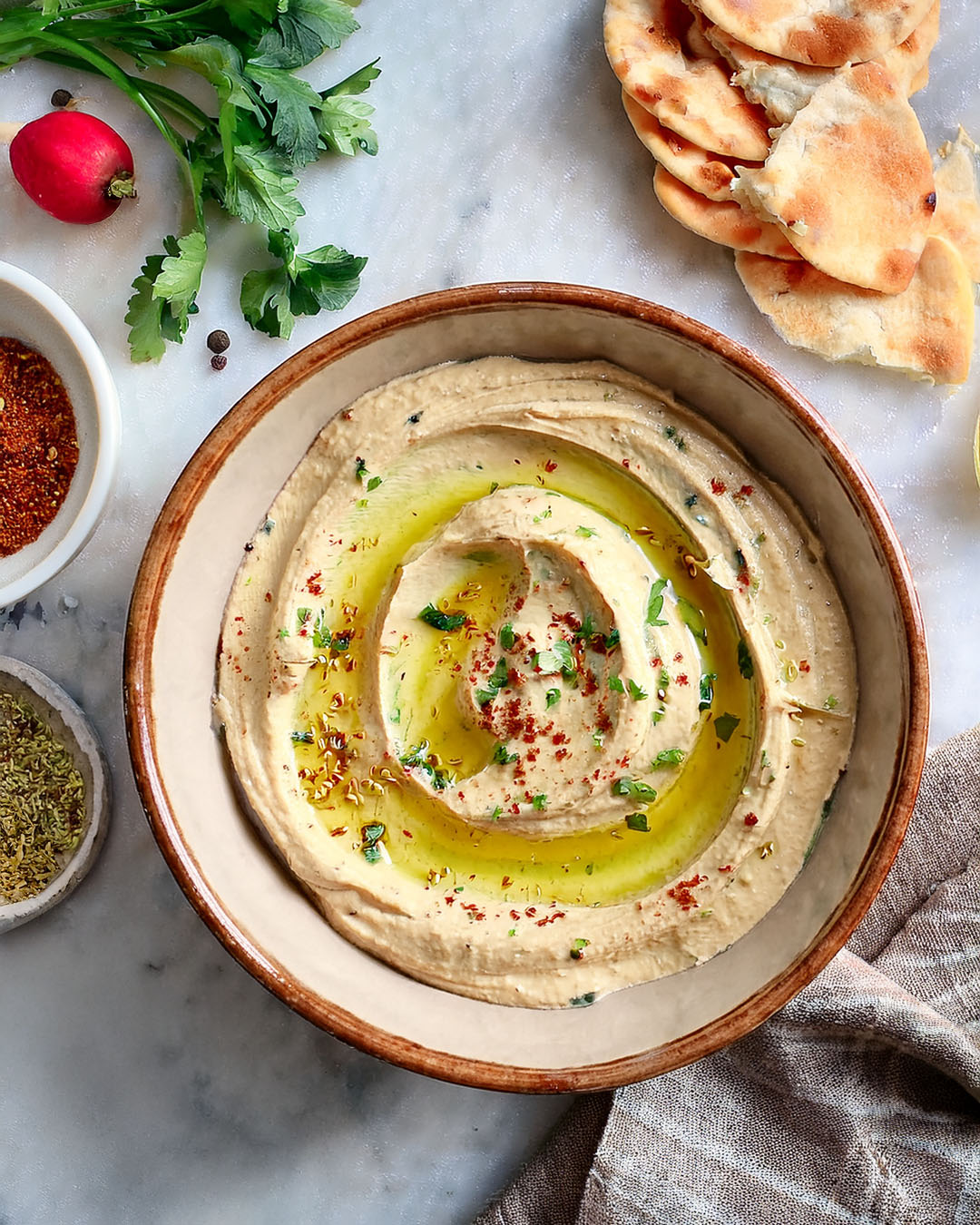



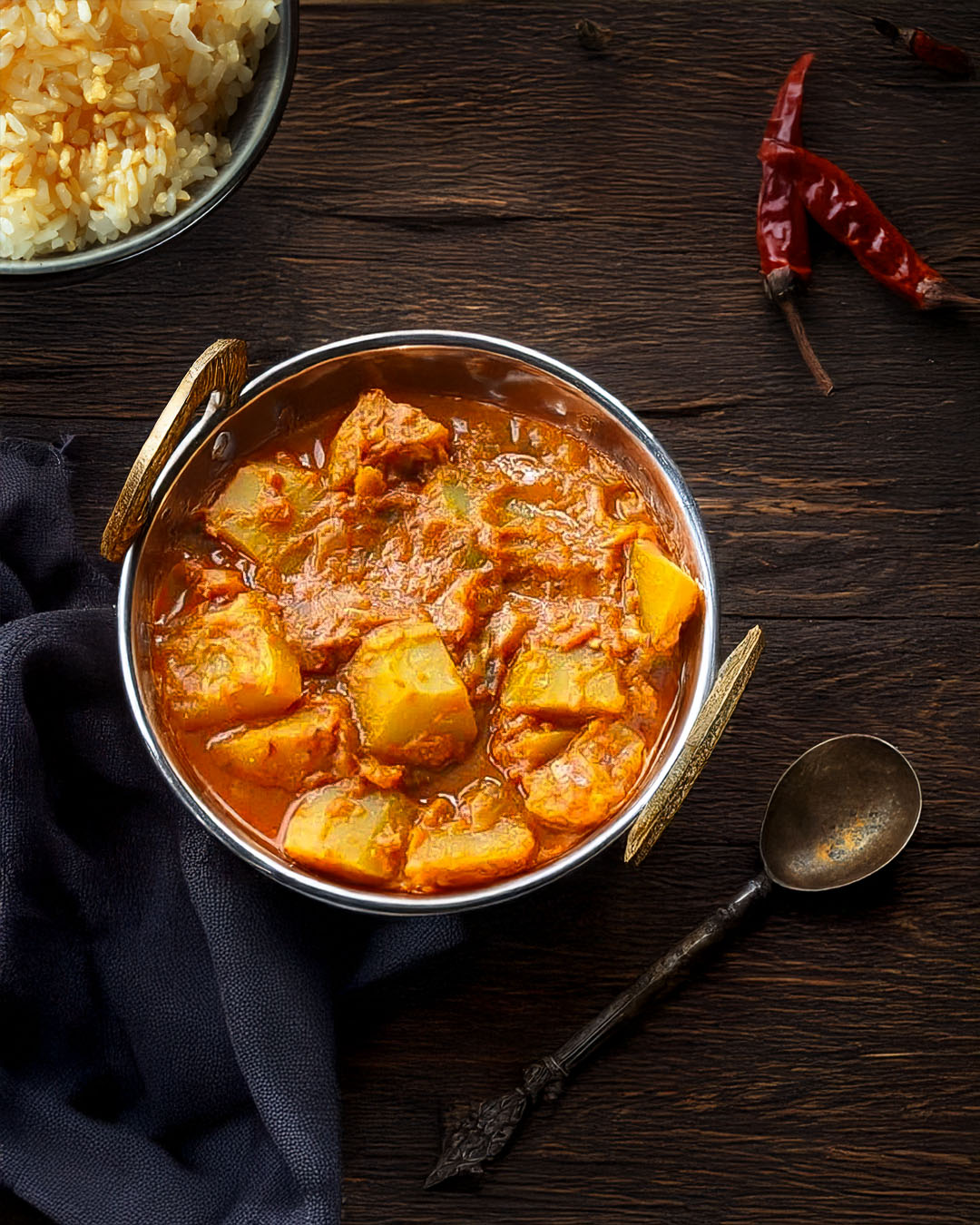

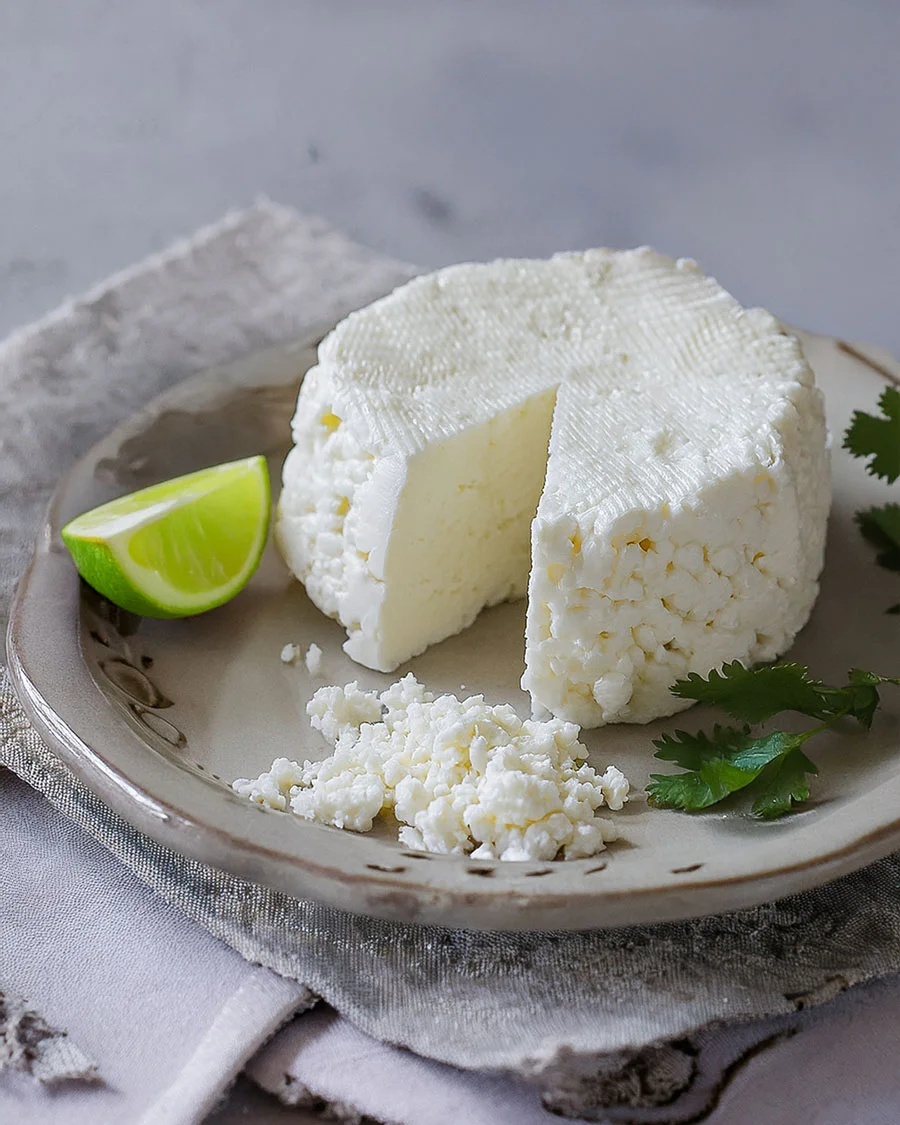
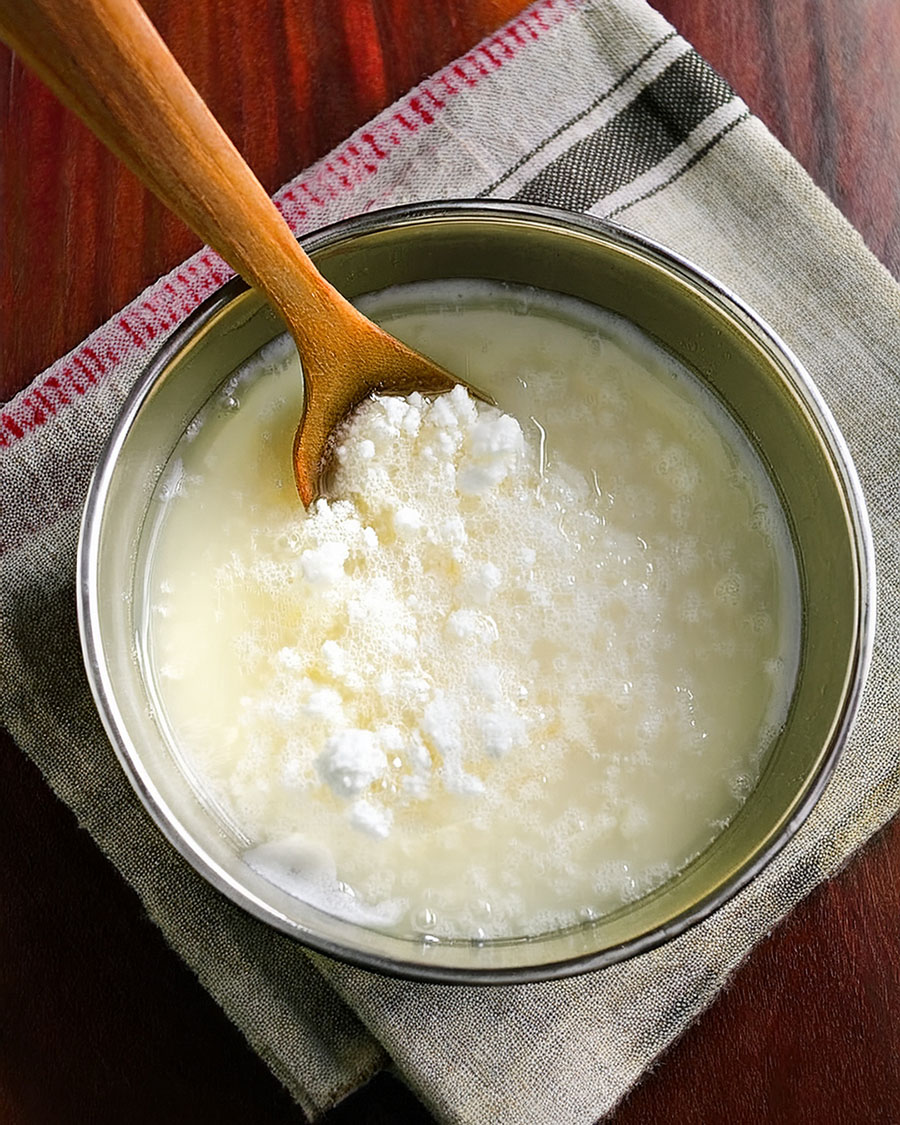


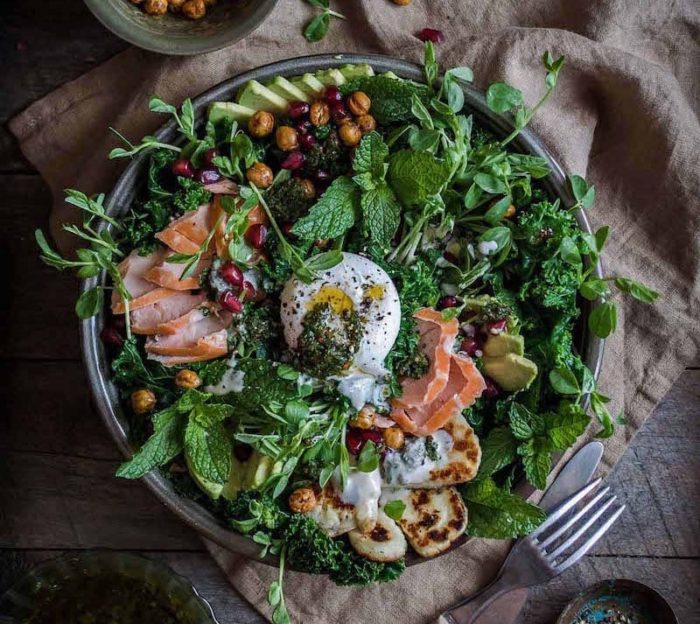
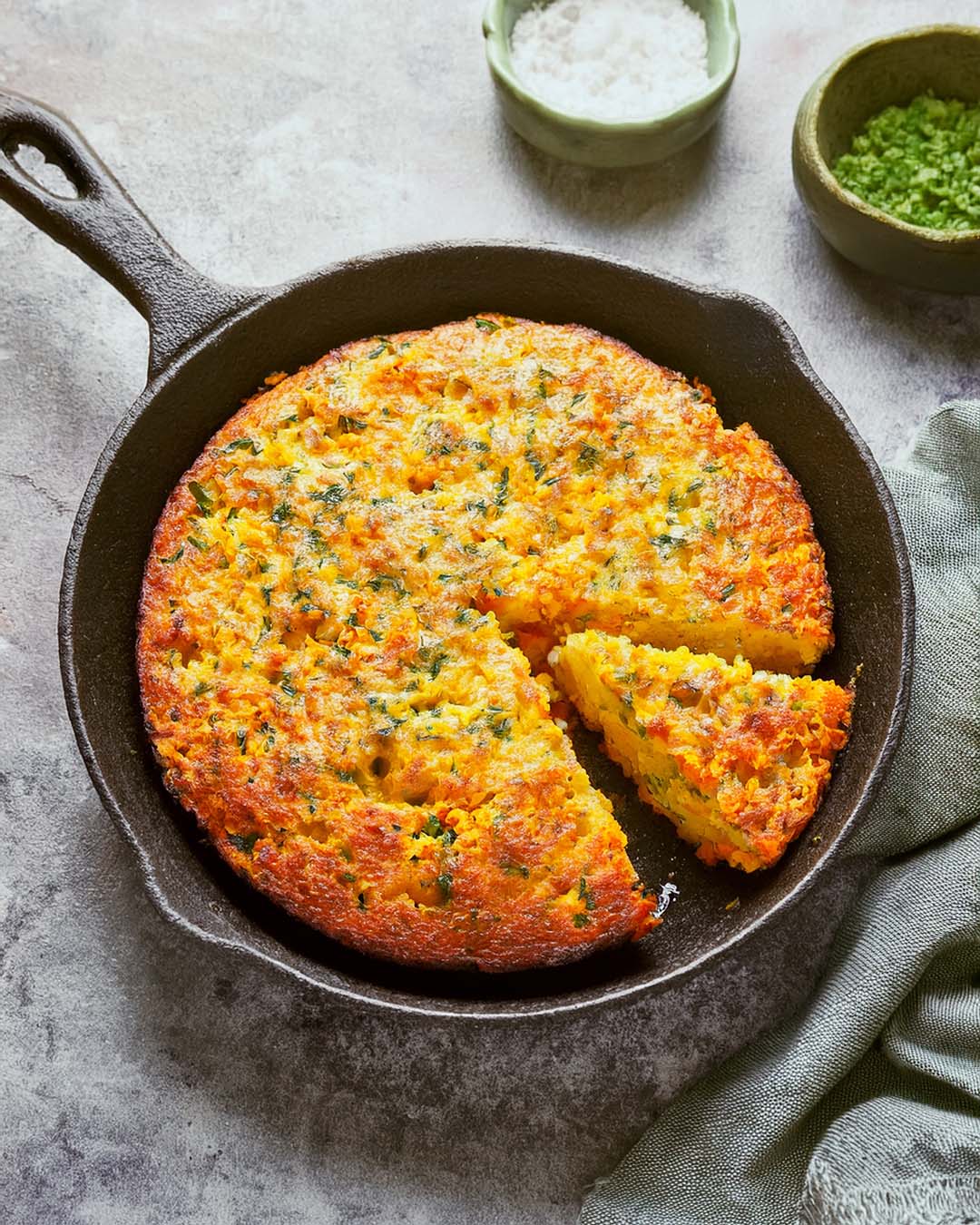


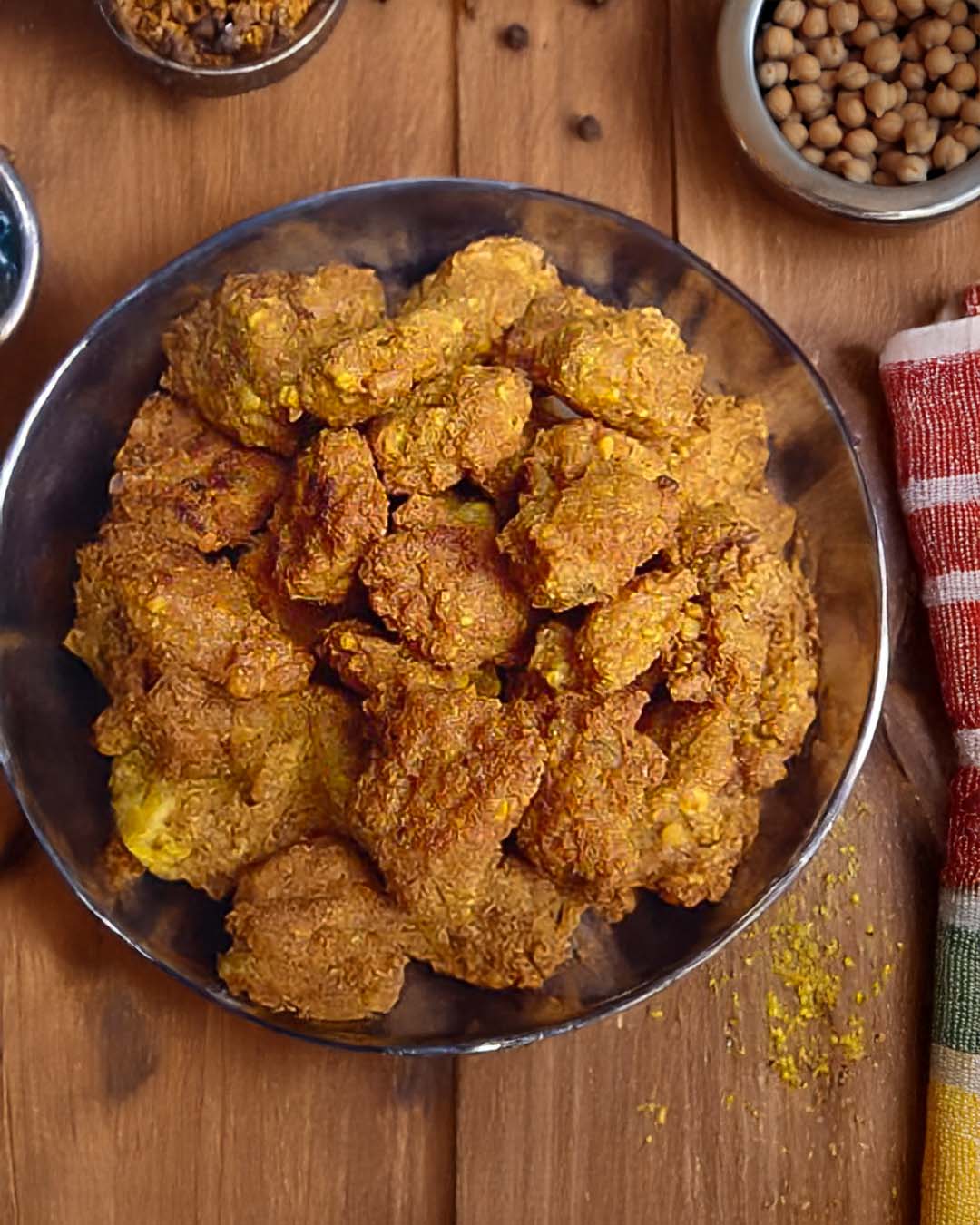
This is fantastic, worked super well!
Great to hear!!
In Step 1 you instruct to bring the milk, using medium heat, to a warm temperature not hot enough to burn a finger and then reduce the heat to low. In Step 2 the heat is turned off before waiting for the milk to curdle. Then in Step 3 there is a warning that the milk will be hot. Did I miss something because somehow warm milk subjected to decreasing heat got hot? Okay, now the big question. What differs Queso Fresco from other acid & milk cheeses? It seems like I’ve seen recipes for ricotta, paneer, quark, and cottage cheese all using UHT milk and acid, whether it be lemon juice, buttermilk, vinegar, citric acid, etc. I know store bought ricotta, paneer, and cottage cheese taste different but it seems all the aforementioned cheese would taste the same if homemade.
I live in Europe so can’t find queso fresco here at all. I tried this recipe today and even doubled it but it only made about a tablespoon of cheese.
Queso fresco is served on a daily basis in my home. My husband lived this receipt. I make queso every day, sometimes i spice it up, ,comino, red chile flakes, ect. Thank you so much for this easy queso fresco receipt.
I lovebhownsimple this is. I am trying it as we speak and hope its as delicious as it sounds! One question, can you do anything with the leftover whey?
Thank you very much!!
I am so loving this! Adam will just love this, he is crazy about authentic foods especially Mexican and this is a favorite cheese of his :) I myself love the world of cheese so I am right there…
Hi Alisha, Really? Maybe you guys will try it and enjoy a little homemade cheese.
I can only imagine tasting your fresh homemade cheese. I think this is a fun project and I’m interested to follow your adventure;-)
Thanks Patty:) I’ve been bitten by the cheese making bug. Wish me luck.
Queso fresco is hard to find where I am at or at least not on a regular basis. A trip to the Mexican market is usually in order. I am eager to try your recipe.
I have always considered the “cheesier” versions of Mexican food more Tex-Mex than authentic Mexican. I definitely lean towards the authentic which is usually lighter and fresher tasting.
Hi Laura, A trip to the Mexican market is not such a bad thing:) I hope you do try it and enjoy the queso.
Yes, absolutely! So many people don’t realize that, glad you do.
I’ve made similar cheese. I remember being so surprised when I realized how simple it is to actually make your own cheese at home! This cheese looks perfect. Great article!
Hi Tamara, Yes it really is so simple one would never know. Thank you.
queso fresco, ah que rico!! Here in South Texas queso fresco is sold by the pound in every store, but a homemade version is always nice to have on hand. I would love to try your homemade version, maybe this weekend. A spiced version, can’t wait!
Hola Bonnie, I can imagine there is an abundance of authentic Mexican ingredients there. Let me know what you think if you make it. I’m still learning and tweaking so feedback would be great.